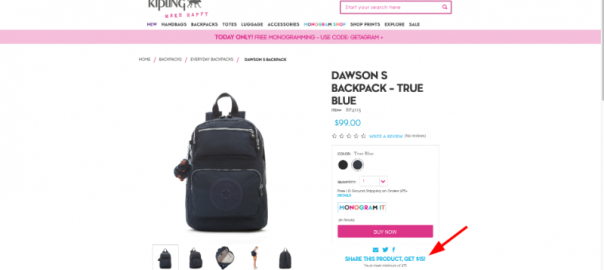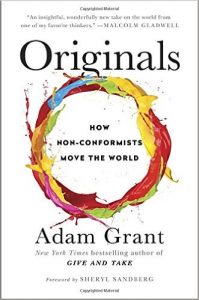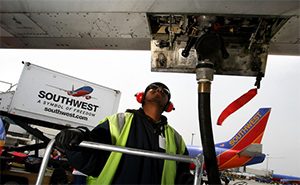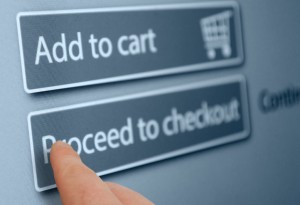Retailers need referral marketing now more than ever if they want to compete in e-commerce.
The reason is that one company is completely dominating the space. In 2015, Amazon had $ 79.3 billion in total e-commerce sales. The next closest competitor, Walmart, had just $ 13.5 billion. Ignoring money, Amazon also accounts for an incredible 74% of total online sales.
Amazon is crushing it and they aren’t going anywhere. But referral marketing presents other retailers—from big box stores to emerging startups—a chance to close the gap.
It’s not just about acquiring more customers. As a retailer, you need to carve out a niche and get a group of repeat customers who are excited about your brand and keep coming back. That’s exactly what referral does. It pulls in more engaged customers, who spend more and stay loyal longer.
But getting those benefits isn’t as easy as slapping some rewards together and asking customers to refer their friends. Here are the five strategies retailers need to win with referral.
1. Design for Mobile

Mobile is the next big opportunity for retailers right now, just as e-commerce as a whole was two decades ago. Mobile commerce sales made up 30% of all e-commerce sales in 2015, up from around 25% the previous year. Providing customers with a top-notch mobile experience could make or break your retail business.
It’ll also make or break your referral marketing program. On the Extole platform, 18% of referrals are sent from a mobile device, while over 39% are accepted on one. If you don’t make your mobile referral experience super easy for customers, you’ll miss out on that huge chunk of referrals.
Check out how Sprig does it above. Using custom APIs, they enable advocates to seamlessly share referrals with friends via text, email, Facebook, or Twitter. From there, Sprig alerts the advocate when their friend has made their first order, which triggers their reward. That positive reinforcement makes the advocate want to keep referring.
2. Tap Into Your Customer Loyalty Members
As a retailer, you probably know how effective a customer loyalty program can be. Research from Accenture shows that loyalty members typically spend 12-18% more than regular customers.
It’s a straightforward marketing strategy. You reward customers the more they buy from you, which gives them an incentive to stick around. Plus, by analyzing your members’ characteristics, you get a more concrete idea of what a highly-engaged customer looks like for your brand, which tells you who to target in the future.
Best of all, a strong customer loyalty program puts you in a prime position to build a top-notch referral program. All you need to do is make referral rewards part of their loyalty program’s existing point system and make sure members know about the referral program. They’re your most engaged customers, so they’re also very likely to refer if you give them the chance.
3. Ask Customers to Refer Right After They Buy

The time between when a customer clicks “buy” and when their product arrives is an experience gap that more and more retailers are looking to fill. That’s why retailers like Sephora are trying things like branded package tracking experiences to keep customers engaged, and seeing big retention boosts as a result.
But the post-purchase stage is an opportunity for more than retention. It’s the time when customers are feeling excited about their purchase, which makes it the perfect time to ask them to refer. Our internal research shows that putting a referral call-to-action on the post-purchase page increases customers’ likelihood to share referral 16x.
Take a look at Zulily‘s post-purchase page above. Most of Zulily’s customers are parents, so the picture of a happy child opening a gift amplifies their excitement about the purchase.
4. Connect Bricks and Mortar
With the rise of e-commerce, all you seem to hear about is how online sales are stealing all the business from physical stores. You’d think brick and mortar was obsolete.
Not the case. E-commerce and in-store shopping are complementary experiences. Online shopping lets you find a specific item, buy it, and have it delivered in a few clicks. In-store shopping is a more spontaneous, sensory experience conducive to browsing. That’s why two-thirds of customers who make a purchase online go to the physical store either before or after the transaction.
You can boost that positive feedback loop by promoting your referral program during point-of-sale interactions at your physical locations. Your in-store staff can act as advocates and give referral codes to shoppers, either by printing them on their receipts, putting flyers with a code into their bags, or by telling them about the program at the register. That gives those customers a reason to check out your site and shop with you online, as well as in your store. You can even give different codes to associates at each store to track performance.
5. Let Advocates Refer Specific Items

Online bag seller Kipling does something totally genius with its referral marketing program. Rather than just having a single CTA for the entire program, Kipling invites shoppers to refer specific bags to their friends with a button on every single product page.
This tactic is so smart because it mirrors the way friends talk to each other about retail stores. Think about it. If you were telling a friend how much you love Kipling, you wouldn’t just say that every single one of their bags is amazing. You’d tell them about your favorites, or the ones you think fit their style, and maybe even whip your phone out to show them pictures. Kipling taps into that dynamic by letting advocates refer their friends to those bags instead of just talking about them.
By letting customers share referrals for the items they like the most, you’re tailoring the program to the way they would normally discuss your products. It makes referral feel much more natural.
Referral is Retail’s Best Move
People trust recommendations from friends and family more than any marketing channel your company can come up with on its own. Referral marketing works so well because it encourages that word of mouth spread and turns it into a measurable source of new customers.
In the wake of a tough couple of decades, that means referral is a huge opportunity for retailers. By following these best practices, you can drive new business to your store and create a deeper connection with customers. That’ll put you in a position not just to survive, but to thrive as the e-commerce landscape continues to shift.
Digital & Social Articles on Business 2 Community(50)








